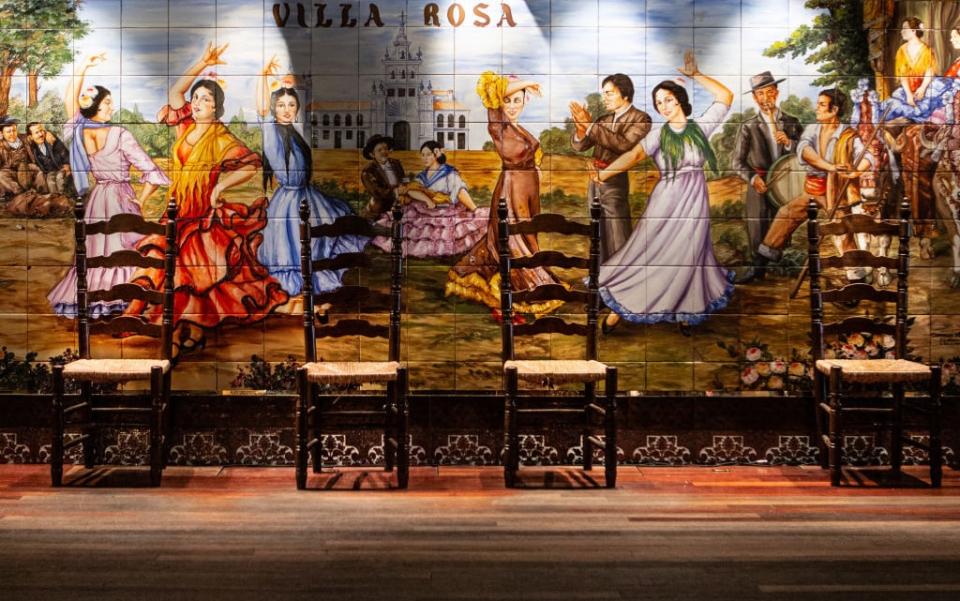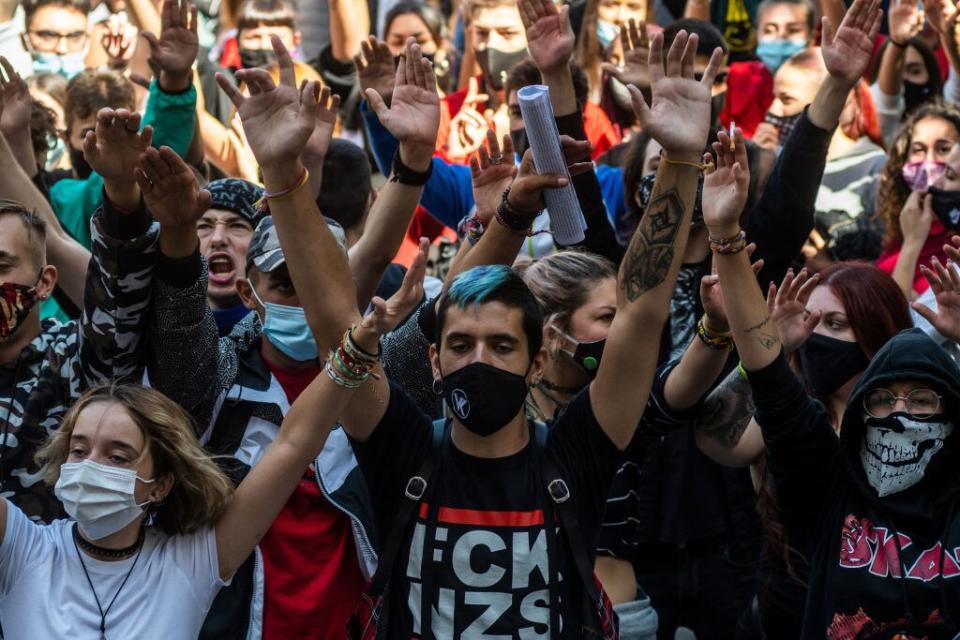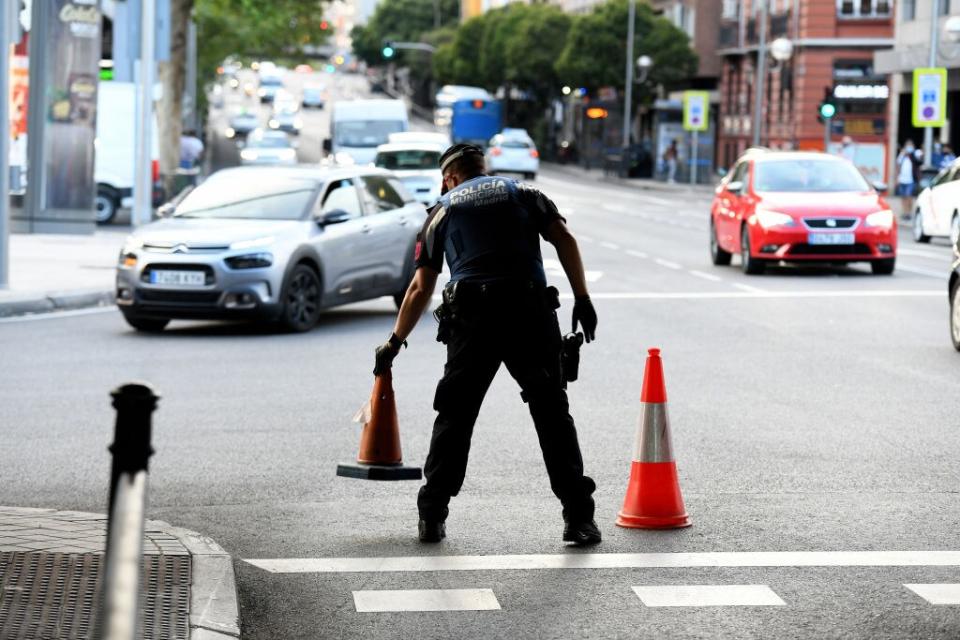The collapse of tourism is turning Madrid into a ghost town

On a warm late September afternoon any other year, a visitor in Madrid would have to jostle to squeeze into a bar or be facing a long queue outside the Prado or another of the Spanish capital’s world-famous art galleries.
But this is the Covid year, Madrid has been handed the unwanted accolade of European capital of the second wave, and the historic centre of the city is in danger of turning into a museum of itself as the absence of tourists shows up the fact that locals no longer live there.
Amongst a smattering of customers at the terrace cafés that ring Madrid’s Plaza Mayor on Tuesday, with the vast cobbled square almost devoid of human traffic, Guilhermo described from behind the obligatory face mask his first impression of Madrid as a “very calm and clean city”.
The 23-year-old student is an anomaly as an international tourist, passing through Madrid on his way back to his home in Brazil after three months learning Spanish in Jaén, Andalusia.
“We’ve lost the hustle and bustle of the city, or the veneer of hustle and bustle that tourism brought to it,” said James Blick, who co-founded Devour Tours in Madrid eight years ago to explain local gastronomy to visitors, and has since taken the idea to other cities in Spain as well as Paris, Lisbon, London and Rome.

“We would normally be giving tours to 60 people a day, just in Madrid, at this time of year. We are now doing a tour about once every two weeks,” said the entrepreneur from New Zealand.
The Madrid region accounts for 14 per cent of Spain’s 47 million population, but it has racked up more than 16,000 Covid-related deaths, a third of the estimated national total, and is now leading the second wave with rates of infection about eight times worse than that of London.
After a draconian three-month nationwide lockdown ended on June 21, Spain’s authorities attempted to spark life into an economy in which tourism and hospitality account for close to 20 per cent, opening bars, restaurants and even nightclubs. Now Madrid is among those cities again pulling down the shutters, imposing neighbourhood lockdowns and cutting off the famous nightlife in its prime, at 1am.

In the city’s huddled residential areas, there is anger and frustration at the authorities’ lack of readiness for a second wave everyone believed was coming, as Madrid’s regional leader, Isabel Díaz Ayuso, resists pressure from the national government to impose stricter measures and is seen as failing to repair deficiencies in healthcare shown up in the first wave.
This time the city’s heroes, the health workers who were applauded daily from locked-down citizens on their balconies from March to May, are not sure they can find the strength to face down the virus again as it destroys the quality of care.
“Madrid is heading to the same situation as in March. We are already suspending surgeries and not treating non-Covid pathologies in the usual way. You can accept errors first time around, but how can it be the same again?” asked Ángela Hernández, vice-president of the Madrid Doctors Association.
“I feel angry and a sense that what should have been done months ago hasn’t been done, in terms of the political decisions, when citizens are doing their bit,” said Deivid, a 42-year-old television camera operator from Madrid.

After the complete lockdown was lifted, businesses faced the choice of opening amidst restrictions on capacity and low levels of trade or remaining closed, with staff on government-subsidised temporary redundancy, and hope that good health management or a vaccine will arrive soon enough to save the situation.
But hospitality sector voices say that some 40 per cent of the city’s 20,000-odd bars may close for good. With almost every country in the world having imposed quarantine restrictions on visitors returning from Spain, the remaining businesses that rely on foreign tourists are hovering on the verge of oblivion.
Lucas Portolés has not opened the doors of Cardamomo, the live music flamenco bar he manages, since March. “The handling of the health crisis has been very erratic. I cannot afford to be so impulsive; if I open, the costs of producing shows in a small space plus the publicity and all the rest would be ruinous if I have to stop again,” he explained.
Mr Portolés also reflected that part of the problem for Madrid’s live flamenco venues, known as tablaos, is that they have not cultivated local patrons. “We’ve allowed people to think that there are no high-quality tablaos, that we are all tacky. So attracting locals is an area for improvement.”
With visitor numbers unlikely to pick up until well into next year, Madrid’s tourism sector has time to consider how to become a more sustainably vibrant destination, a dilemma facing other cities whose historic quarters have become hollowed-out playgrounds for the international traveller.
“We’ve gone from over-tourism to under-tourism at the flick of a switch, and cities like Venice, Madrid and Barcelona are realising is that this mono-economy based on the tourist has changed the shape of the city to the point that we have to ask ‘are they even cities anymore’?,” said Mr Blick.
“And if the answer is that they’re no longer operating communities, then is that even attractive for a tourist?”
What does the future hold for the most popular cities in Europe? How can they stop themselves becoming living museums? Please leave your comments below.

